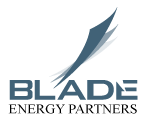November 2019
StrinGnosis® is a constantly evolving and improving product and is currently in active development. The latest version of our software, StrinGnosis® 3.1, was released in November 2019.
StrinGnosis® Release Notes
Overview: Key Features in 3.1
- The thermal engine now also calculates transient thermal simulations.
- July 2018 API specification for collapse yield strength now used by default.
- Multiple pore and fracture pressure profiles are now supported.
- Extensive refinement of Wellhead Movement calculations.
- Formation pressure, trajectory, grade and tubular inputs, as well as stress load comparisons, have been extensively reworked and enhanced.
- Import handling is now unified across the program and much more powerful.
Features
Casing Input and Wellbore Description
- Now issues a warning if string hole size is equal to OD and an error if it is less than OD.
- The 3D wellbore diagram has been overhauled and enhanced.
- WCD loads now have their own design factor, separate from the casing or tubing design factors.
- There is a new column on the Design Basis table to enable Actual Wall Thickness consideration on a given section. If enabled, it uses RBW value in the API Burst and VME calculations; otherwise, those are performed using RBW and wall tolerance.
Equipment
- The OBM and WBM tabs in the Fluids table now show the in-use thermal conductivity as calculated.
- WBM table now report specific heat at STP.
- It is now possible to filter grades by range of yield strength.
- The Tubulars table now indicates the given tubular’s density variance from the program default value.
- PVT coefficients in the fluid manager are now displayed with 2 decimal places in the exponent instead of 3.
Miscellaneous
- Tools > Options has been simplified and moved to File > Preferences.
- Import handling is now unified across the program and much more powerful.
- Stress results window now uses boldface text to indicate calculated loads on strings.
- Keyboard shortcuts are now available for all menu items, including recently used files.
- Options window has been overhauled, simplied and optimized for Windows 10.
- The term “minimum acceptable safety factor” has been changed to design factor” in all usages.
- Curvature units are now given in deg/100 ft or deg/30 m instead of deg/ft and deg/m.
If user enters a new database name, it is immediately validated instead of when the user clicks “Save”. - “Trajectory – NS EW” has been renamed to “Residual Stress Ratio”.
- The APB tab has been renamed to “APB & WHM Analysis”.
- The splitter between re-sizable panes has been enhanced and optimized.
- Trajectory inclines over 89.99° are now capped.
- Notes text now wraps within the current form size instead of expanding the form.
- It is now possible to enter negative formation temperatures and a negative temperature for surface injection temperature.
Standard Loads
- Load descriptions are now clearer on Tubing Shut-In and Production Tubing Lead Loads.
- Load descriptions now capture hanger pressure and all annular sections on all loads.
- Preload description text on Initial Condition load form has been expanded for clarity,.
- Default String-to-String Friction factor in overpull load case is now 0.2. The Help file now includes documentation of the source references for the friction factors.
Stress Results
- Now uses July 2018 API calculation for collapse yield strength by default.
- There is a new column in the Forces and Pressures table for Collapse Mode, showing the values Yield, Plastic, Transition, Elastic, or NA, according to API 5C3.
- There are three new columns in the Forces and Pressures table, for OD, ID, Radial Clearance and Hole Size at depth.
Thermal Simulator
The thermal engine now also calculates transient thermal simulations. Thermal cases from existing projects will be imported as Steady State cases with duration of at least 24 months.
Better generation of color mixtures in multiple temperature profile plots.
Better interaction of settings GOR and Gas Rate.
New columns on the Results table report Flowing Pressure Gradient, Friction Pressure Gradient and Hydrostatic Pressure Gradient.
For more information about StrinGnosis® and it’s ability, you can find that at StrinGnosis.com












